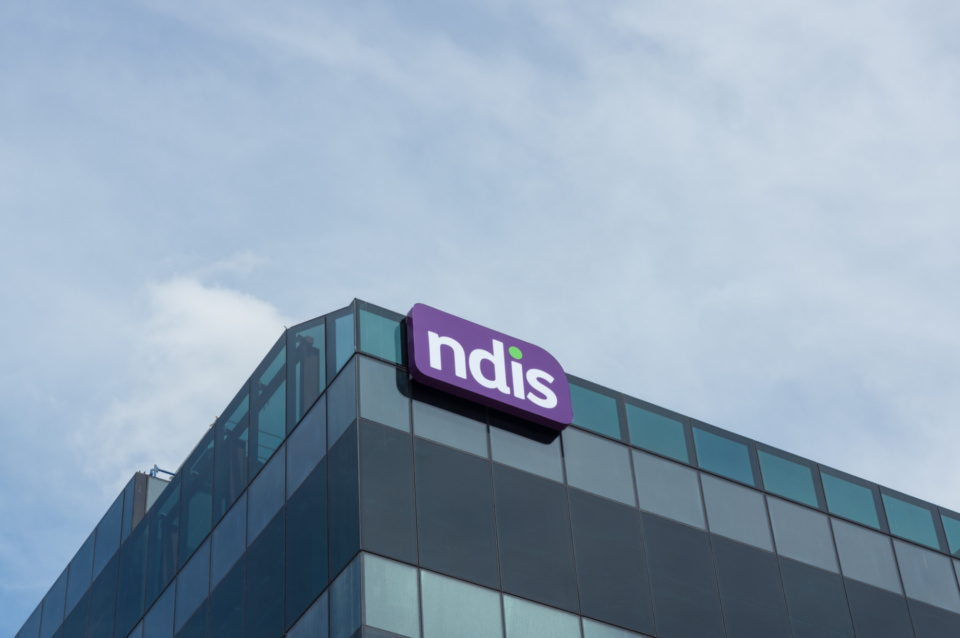
An election surprise, a Press Club debate, and investment inertia: 2025 in review
Posted on 10 Dec 2025
What a year 2025 has been, particularly at a national level where the Parliament and politics as we…
Posted on 08 Oct 2024
By Doug Taylor

Bridging the digital divide is crucial to helping overcome educational inequity caused by poverty, says the CEO of The Smith Family, Doug Taylor.
I read recently how, after months of protests and strikes, Hollywood is embracing artificial intelligence. Writers and actors who initially spurned AI for fear it would replace their jobs have accepted that change is inevitable.
This hard-earned lesson extends beyond Hollywood. Industries worldwide – retail, finance, agriculture – are right now grappling with the challenges of digital technology. Adapt, adopt and innovate, or risk being left behind.
The not-for-profit sector is about as far as you can get from the world of showbiz, but we’re facing the same challenge. We must embrace change to stay relevant and effective in the communities we support now and in the future.
Our report card is mixed. On the positive side, 69% of not-for-profits in Australia and New Zealand are either using AI tools or planning to adopt them within the next year. Almost a quarter aim to explore big data and machine learning during the same period. These are the findings of Infoxchange’s most recent survey on digital technology use in our sector.
However, the survey also uncovered some concerning trends.
Only one-third of organisations said their systems work well, and less than a quarter said their systems enable them to measure impact. Some responses also suggest our sector isn’t taking cybersecurity and digital technology planning seriously enough.
Adapting is essential. One important aspect of staying relevant is connecting with the people and communities we support in ways that fit their lives today – increasingly, that means online.
At The Smith Family, digital tools are already transforming how we connect with the students and families we help to overcome educational inequity caused by poverty.
Some of our programs, like iTrack, which connects high school students with mentors, and Saver Plus, financial literacy education, are run online. This shift has made our programs more accessible and revolutionised the day-to-day support we provide.
It might sound simple, but a standout example of the integrated model we are working towards is our online portal used by the families we support.
Over the past five years, this digital approach has become central to our operations. It’s where families can safely and easily share personal information with us, and where we can instantly reach students and families on their mobile devices, delivering practical advice and resources when they’re needed.
Despite the perception that many families experiencing disadvantage face barriers to being online, we have learned they are often more connected than expected. We just need to meet them where they are. Mobile phones are convenient and allow for real-time interaction while bypassing the complexities of desktop computing.
This doesn't mean abandoning face-to-face support but rather supplementing it to better meet the diverse needs of the students and families we work with.
"Our sector must invest in new technology. We must enhance our digital capabilities and foster forward-thinking leadership that recognises the crucial role of digital transformation."

The innovation potential in the digital arena is limitless. Hats off to those leading the way in going digital with their programs and services.
ReachOut is a shining example. It is a pioneer in providing mental health support online to young people across Australia. It says its online services address many of the barriers, including stigma and embarrassment, that prevent people from seeking help.

I’m inspired, too, by organisations like WorkVentures. For decades it has been working at the intersection of technology and inclusive communities.
Our sector must invest in new technology. We must enhance our digital capabilities and foster forward-thinking leadership that recognises the crucial role of digital transformation.
And clearly, behind all this sits the need for everyone in Australia to have access to a stable and sustainable internet connection. A mobile with a limited data plan that could be cut off if a bill isn’t paid on time is inadequate.
Today, access to a device with reliable internet is as fundamental to a young person’s education as pens and paper. Yet 30% of students on our flagship Learning for Life program live in households that don’t have both of these things.
No child should have to do their homework on a tiny mobile phone screen or at their local public library. Digital inclusion should be a fundamental right for us all.
Embracing digital tools not only enhances our work but also empowers the people we support. This doesn’t go far enough though. As a sector and a nation, it is our responsibility to ensure all Australians expand their digital skills and abilities so they can thrive in the coming decades.
Children, too, need to be equipped with the digital know-how and hardware essential for their futures.
As low-skilled, entry-level jobs disappear or evolve into roles requiring sophisticated abilities and attributes, including critical digital skills, the need for post-school qualifications is becoming increasingly evident. Experts predict that it won’t be long before more than 90% of new jobs will require such credentials.
Along the way we must be vigilant about risks. Digital platforms can be powerful tools for connection, but they can also expose people to abuse, scams, and addiction.
As we adopt new technologies, we must continue to invest in robust strategies and practices to mitigate risk and protect people and their information. This applies to the not-for-profit sector as much as any other.
Digital transformation won’t happen by accident. It requires collaboration, leadership, strategic investment, innovation, and a commitment to providing equitable access for all.
Infoxchange’s survey also identifies our sector’s top three technology challenges:
Perhaps, too, a broader mindset shift is needed to help us fully realise what can be achieved by embracing and investing properly in digital technology.
A national digital strategy is another fundamental but missing piece of this puzzle. Coordinating the effort and resources needed for comprehensive digital inclusion is vital, and our country’s states and territories have a key role to play. We're encouraged by news of an upcoming digital strategy for New South Wales.
As industries around the world embrace digital technology, our sector must be just as proactive. Change is inevitable, and if we’re playing catch-up, we’re already behind.
Technology is advancing at breakneck speed and our not-for-profit leaders, boards, staff, and volunteers need to be on the frontline, seizing opportunities and innovating. Vision, ambition, and a real commitment to change will be crucial.
As Hollywood learned, resisting change won’t stop it. So let’s be bold and think big. Let’s make sure our sector and the communities we support are not left behind.
Doug Taylor is CEO of The Smith Family, a national children’s education charity. He is also co-chair of 2024 Anti-Poverty Week, which runs from October 13 to 19.

Posted on 10 Dec 2025
What a year 2025 has been, particularly at a national level where the Parliament and politics as we…

Posted on 26 Nov 2025
Charities and not-for-profits can be outstanding advocates for their cause, their community, their…

Posted on 12 Nov 2025
Managing a charity or not-for-profit in Australia is often more complex than it may appear. On any…

Posted on 29 Oct 2025
One of the most contentious debates across many areas of human services is the for-profit versus…

Posted on 28 Oct 2025
Workers in the not-for-profit sector lift up communities, care for those in crisis and do work that…

Posted on 08 Oct 2025
The cost of climate change's impact on Australian life is increasingly well documented. The…

Posted on 08 Oct 2025
The Wurundjeri Indigenous people who live in and around Melbourne understand their environment as…

Posted on 30 Sep 2025
I am proud of what Our Community, and its exceptional team, have achieved in the past 25 years. As…

Posted on 24 Sep 2025
If a business ran the government, a corporatocracy would likely emerge, prioritising profit over…

Posted on 09 Sep 2025
This has been another big week in the evolving story of tech oligarchs versus Australia, profit…

Posted on 03 Sep 2025
The problem with the NDIS is not autistic families or children, says Annabel Rattigan, a leadership…

Posted on 27 Aug 2025
It used to be that businesses could concentrate on profits, profits and profits, only playing in…